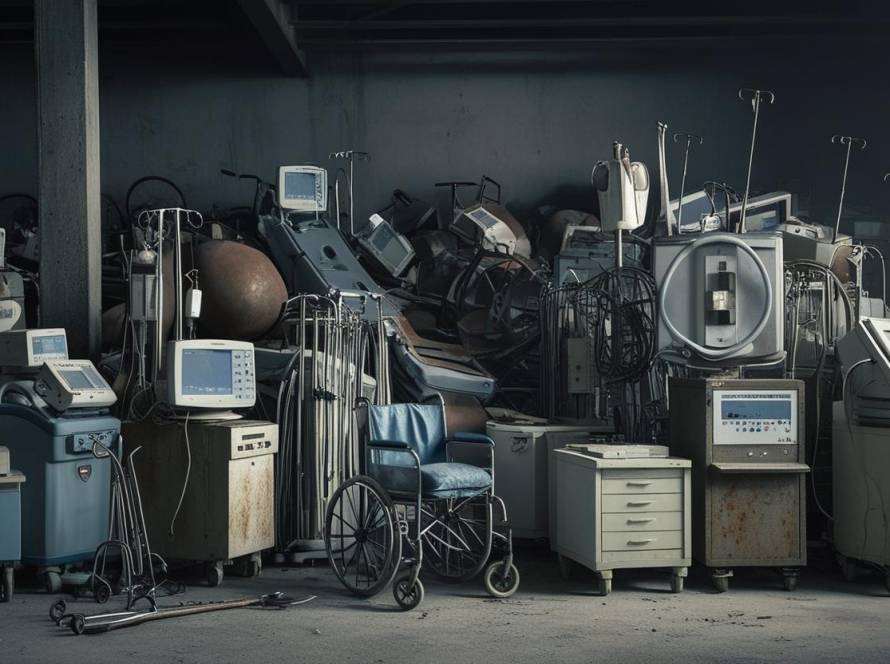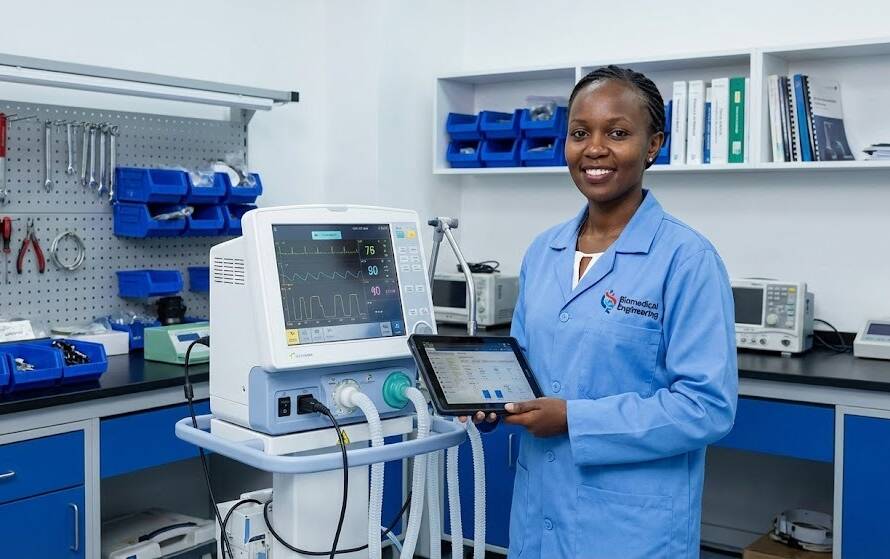Speed meets accuracy— with an outcome that is far from catastrophic.
In the past, we often faced a difficult choice: act quickly or act precisely. From performing calculations to making split-second decisions on the road, to patient-care decision-making. The tradeoff between speed and accuracy has often been a limiting factor.
Accuracy in the medical field is paramount. However, due to issues like limited healthcare providers, speed is often prioritized. This tradeoff has proven fatal over and over. According to Kenya National Union of Medical Laboratory Officers, approximately 30% of Kenyan patients are misdiagnosed. 1 These misdiagnoses can lead to aggravated illnesses, permanent disabilities or even death. In Bungoma county, errors have been identified as predictors of adverse obstetric outcomes.2 While we cannot overlook the root causes of this challenge such as the critical shortage of medical personnel (WHO, 2024),3 something can be done to change the paradigm that speed and accuracy are mutually exclusive.
From ChatGPT to Global Transformation: How AI is Reshaping Industries and Redefining Healthcare
A new era in technology was ushered in with the emergence of Artificial Intelligence. In 2022, a significant breakthrough occurred when a team of brilliant minds introduced ChatGPT—a state-of-the-art conversational AI that rapidly gained widespread popularity. This marked a turning point, firmly establishing AI as a mainstream concept recognized across the globe.
Since then, AI has been applied across various domains, including robotics, image processing, natural language processing, smart city development, and more recently, the healthcare sector.
A Focus on Healthcare
While the healthcare sector faces significant challenges, artificial intelligence is demonstrating remarkable potential to revolutionize patient care. Far from being hindered by obstacles, AI adoption in medicine is accelerating, with groundbreaking applications already making an impact. Current innovations include:
- Ubenwa(Nigeria) leverages AI to detect birth asphyxia via infant cries.
- Rology (Egypt) -AI driven teleradiology platform that connects hospitals (especially those lacking specialists with remote specialists for remote imaging interpretation.
- Dr. CADx (Zimbabwe) -AI powered platform to assist radiologists and clinicians in diagnosing lung diseases and cancers from chest X-rays.
- MPharma(Ghana)- AI driven Drug Supply management.
- Vectorgram (Kenya)- A cloud based medical imaging platform specializing in AI powered radiology workflow solutions.
Such applications of AI represent only a fraction of its potential. The technology remains underutilized in clinical practice, with numerous opportunities to enhance routine diagnostics and therapeutic interventions.
Some ways we can continue to leverage AI include:
- Developing assistive tools for doctors to analyze patients’ information for faster diagnosis and decision-making, as well as for monitoring & predictive diagnostics for chronically ill patients.
- Analysis of lab results.
- AI-driven prediction of individual patient responses to prescribed medications, accounting for comorbidities, concurrent treatments, and pharmacogenomic factors.
However, implementation faces significant hurdles, including data fragmentation, inadequate infrastructure, inequitable digital access, and regulatory delays.
What can we do now?
Despite existing challenges, Africa is laying strong foundations for AI-driven healthcare innovation. To sustain this momentum, strategic focus on these key areas is critical:
1. Talent Pipeline Expansion
- Universities (e.g., DeKUT) and tech hubs (Andela, ALX) are scaling AI/data science training.
Next step: Specialized healthcare AI curricula (e.g., medical imaging informatics, clinical NLP).
2. Community-Led Skill Application
- Groups like Deep Learning Indaba and Zindi bridge theory and practice through healthcare-focused competitions (e.g., TB detection algorithms).
Opportunity: Partner with hospitals to co-develop solutions for local needs.
3. Startup Ecosystem Support
- Innovations like Ubenwa (AI for newborn health) prove viability.
Priority: Increase funding for diagnostic/predictive AI tools addressing Africa’s top disease burdens (malaria, maternal health, etc.).
By doubling down on these efforts, Africa can turn its AI potential into tangible healthcare breakthroughs.
Bringing it all together,
In the mid 19th century, the mechanized sewing machine was invented. This key milestone in the clothing industry was very disruptive. It led to losses of jobs and devaluation of craftmanship. However, it also led to a massive increase in production, the birth of the ready-made clothing industry and a boost to economic growth and urbanization. While AI has drawn criticism for displacing certain roles—much like the sewing machine revolutionized textile labor—it has also transformed industries for the better. In healthcare, AI has automated tasks traditionally performed by medical transcriptionists (through voice-to-text AI), reduced the need for manual radiology image sorters (via automated triage systems), and even diminished demand for some clinical coders (with NLP-powered billing tools). Though concerns persist—fueled by dystopian narratives like those in Terminator—the focus should shift toward leveraging AI to modernize medicine: enhancing diagnostic accuracy, streamlining workflows, and expanding access to care.
AI can be integrated into healthcare to improve speed of service delivery while improving the accuracy of the results. Realtime analytics can predict patients’ reaction to drugs and help design a patient-centered treatment approach. Here, speed meets accuracy. The world will be better.
Citations:
1AI in Healthcare Diagnostics and Access in Kenya: An Overview. (2025). Academia.edu. Retrieved April 15, 2025, from https://www.academia.edu/127634667/AI_in_Healthcare_Diagnostics_and_Access_in_Kenya_An_Overview
2 Wafula, D. N., Kinyua, K., Mutua, F., Kertich, D., Macharia, P., & Kem, P. (2024). Diagnostic errors and their impact on obstetric outcomes among post-natal women at level five teaching and referral hospitals in Bungoma County, Kenya. African Journal of Empirical Research, 5(4), 1641–1647.
3World Health Organization. (2024). Modelling the health labour market outlook in Kenya: Supply, needs and investment requirements for health workers, 2021–2035. World Health Organization. https://pmc.ncbi.nlm.nih.gov/articles/PMC11703116/





